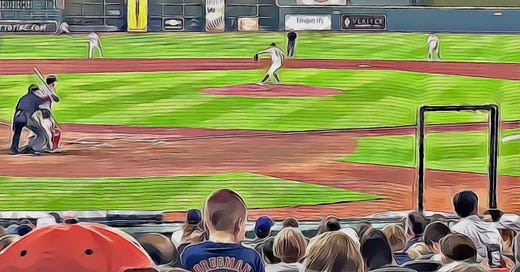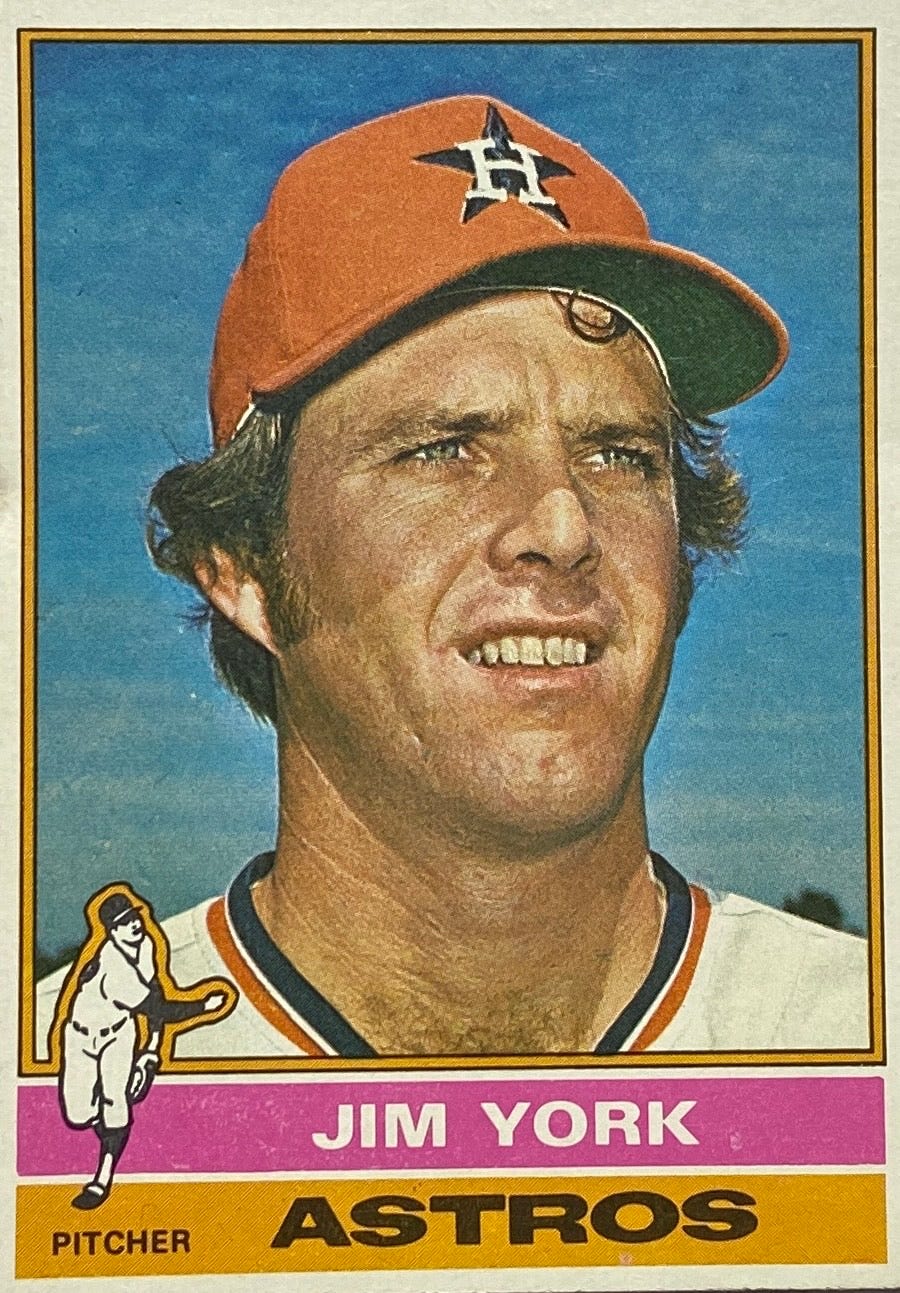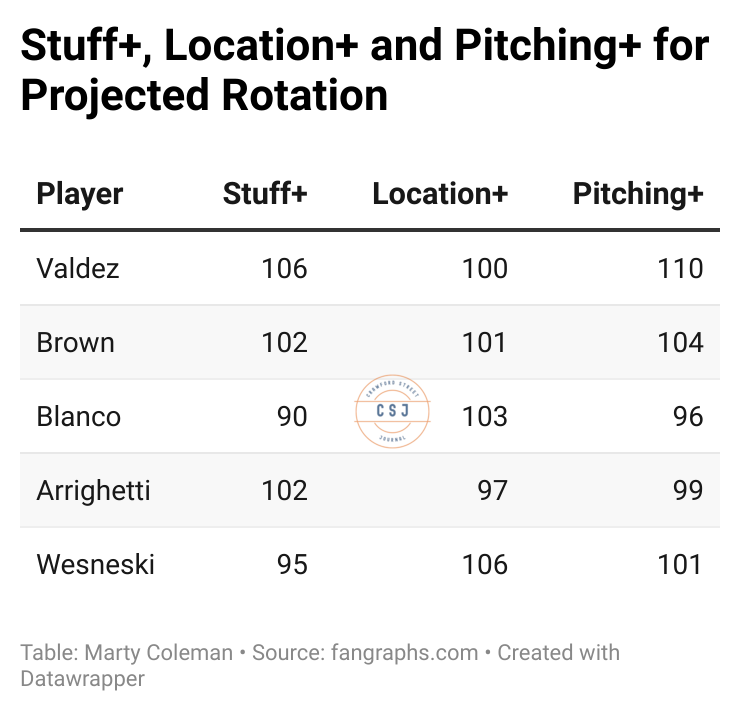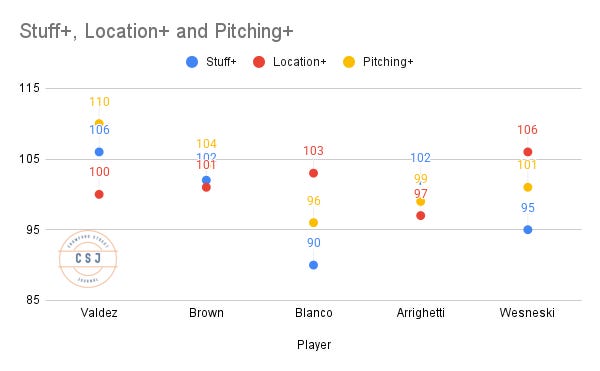I haven’t delved into these advanced pitching metrics much, because quite frankly, I’m not sure I understood them very well (or at all).
But earlier in the week I came across an article on The Athletic about how all teams use them, or at least some version.
I found the article interesting and enlightening, even if I already “knew” some of the findings and if you care about things like “Why did the Astros trade for this guy with mediocre stats?” kind of discussion, it’s definitely for you.
Takeaways: Velocity and Release Point are Important
The upshot is velocity is important. Duh.
hitters have to time the fastball — they have to be able to swing early and hard enough to hit the pitch that is still the most common in baseball. When they do so, they open themselves up for mistakes and swings and misses.
We’ve all known this since Little League, right? It’s still true in the Major Leagues, but it reinforces why pitchers “chase velocity” and in weird way, it’s nice to know my Little League coach was right about something all these years later.
But there’s also this:
One surprise from these models is that release point is incredibly important. What seems likely is that hitters see a release point and then automatically expect a certain type of movement from that slot. Pitchers who can play with that expectation — like Josh Hader does with his unique fastball — do really well in stuff models.
As I tend to do, I reverted to the Fangraphs definitions to assist me in more layman-type language.
Stuff+ looks only at the physical characteristics of a pitch. Important features include, but are not limited to, release point, velocity, vertical and horizontal movement, and spin rate. A pitcher’s secondary pitches are defined based on their primary fastball — with “primary” defined by usage in an outing — and so are judged by velocity and movement differentials along with raw velocity and movement numbers.
Location+ is a count- and pitch type-adjusted judge of a pitcher’s ability to put pitches in the right place. No velocity, movement, or any other physical characteristics are included in the statistic. A breaking ball should go to different parts of the strike zone in 2-0 and 1-2 counts, and Location+ captures that phenomenon.
The overall model, Pitching+, is not just a weighted average of Stuff+ and Location+ across a pitcher’s arsenal. Rather, it is a third model that uses the physical characteristics, location, and count of each pitch to try to judge the overall quality of the pitcher’s process. Batter handedness is also included in Pitching+, capturing platoon splits on pitch movements and locations.
The model is designed so that 10 points of Stuff+, Location+ and Pitching+ is a standard deviation on the pitch level. Once those numbers are summed up, the spread changes.
Applying Takeaways to Astros Projected Rotation
Having a basic, and I do mean basic, understanding of what’s being measured, why and how, I wanted to apply this to the projected rotation for the Astros.
It should come as no surprise that Framber had the best Stuff+ and the best Pitching+ numbers for the five pitchers listed.
More surprising is the low number for Blanco under Stuff+. Remember - 10 points is a full standard deviation.
Perhaps this helps explain some of Blanco’s lagging peripheral numbers and hints at regression ahead, but he locates well. That’ll be an interesting track to follow.
But it also shows something interesting about Hayden Wesneski. Not great stuff, but boy he locates it well, better than any of the other four projected starters.
Below are the MLB rankings for 2024 - starter only - which helps show the sizable difference between Wesneski and the rest of the rotation in Location+.
Overall, Wesneski rates as a slightly above-average starter and one the Astros believe they can improve.
If I had to sum each up in a few words, it’d be:
Valdez has really good stuff with average location, Brown is a solid across the board, Blanco relies on excellent location, Arrighetti is struggling to locate his pitches and Wesneski is a pitcher, not a thrower.
Perhaps my next step is a multi-year comparison, but for now this is a starting point.
Conclusion: Location, Location, Location
I’m not sure I’ve come to any grand conclusions, other than different pitchers win in different ways, which we already knew and there are some obvious areas for improvement especially in the location metric.
That and I can see why Houston wanted Hayden Wesneski. Despite a mediocre fastball, he has that coveted extension and a nice average exit velocity to go along with the ability to locate his pitches.
There’s something there and I’m looking forward to seeing if the Astros can develop it.
As always, thanks for reading!








